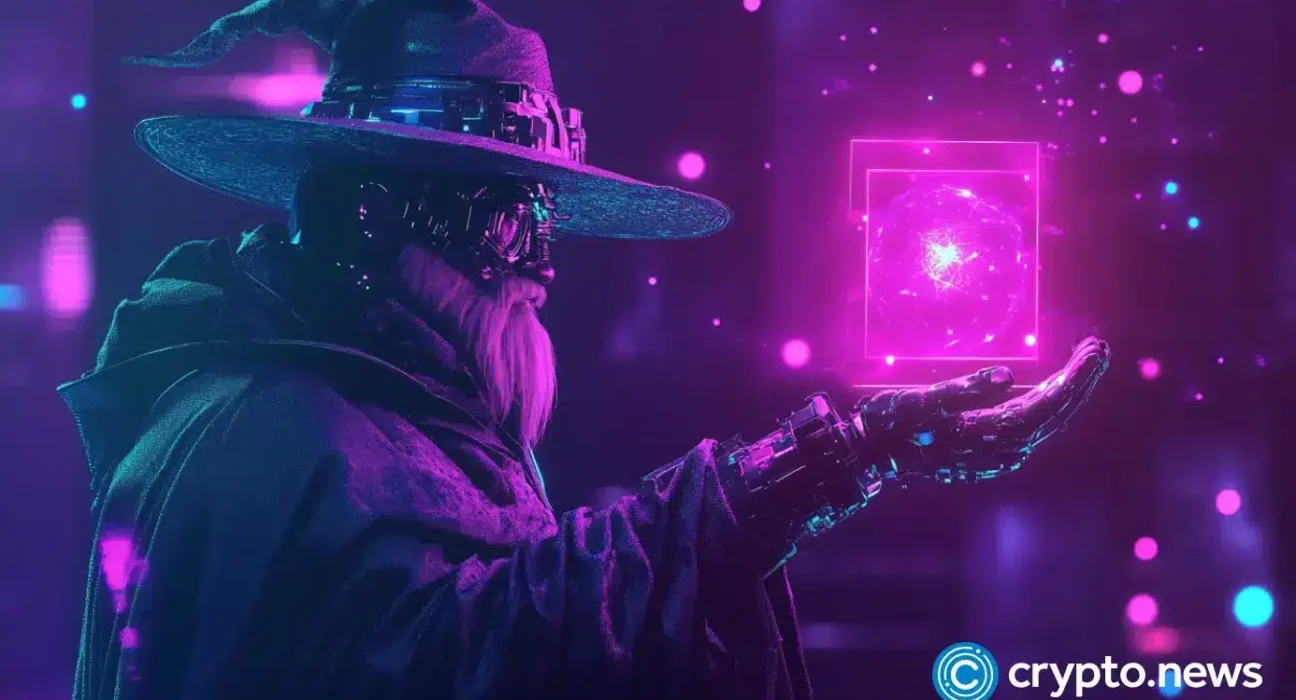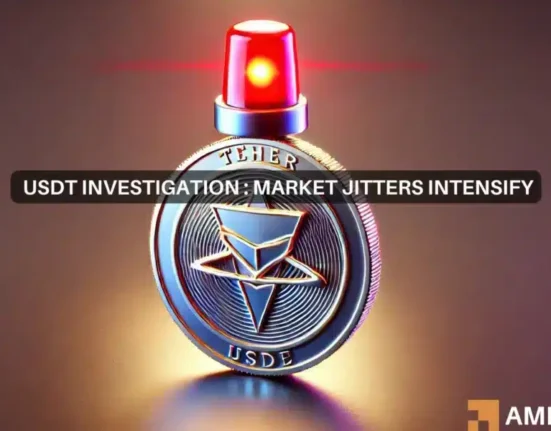After a dull stretch, NFT sales have taken a turn for the better. What’s behind this momentum, and is it a sign of a lasting revival?
NFTs are finally making a comeback
Non-fungible tokens are starting to show signs of life again after a rather dull performance in the last few weeks.
According to data from CryptoSlam, sales between Sep. 30 and Oct. 6 soared past $84.9 million, marking the highest sales volume since the week ending Aug. 25, which recorded over $93 million.
What’s even more interesting is that the NFT market has been gaining momentum throughout September. During the week of Sep. 16-22, NFT sales reached $69 million, and the following week, Sep. 23-29, saw a modest uptick to $75 million.
The current week, as of Oct. 7, has already clocked over $5.5 million in sales, suggesting that the market could continue this upward trend.
In addition to the rise in sales volume, there’s been an increase in activity, with over 2 million transactions recorded in the last seven days as of Oct. 7, a 29.73% jump from the previous period.
However, it’s not all sunshine. The average sale price of NFTs has dropped by 32.91%, now sitting at around $43 per sale, indicating that while more people are engaging with NFTs, the high-priced collectibles may still be lagging behind.
With the numbers showing positive momentum, what’s driving this rebound? Let’s dive deeper into which blockchains are leading the NFT race, why NFTs are making a comeback, and what we can expect in the days to come.
Which blockchains are leading the race?
As of Oct. 9, Ethereum (ETH) still holds the crown as the dominant blockchain in the NFT space, but the landscape is shifting, and other platforms are quietly gaining ground.
Ethereum (ETH)
Ethereum remains the leader in terms of NFT sales, bringing in over $26.5 million in the past week. Ethereum’s sales accounted for nearly 31% of the entire NFT market, but it’s also plagued by a relatively high percentage of wash trading — roughly 11.69%.
Wash trading involves artificially inflating the volume by buying and selling within the same wallet to create the illusion of higher demand.
Despite this, Ethereum’s vast user base and dominance in the NFT ecosystem cannot be ignored, as it recorded over 136,000 buyers during this period.
However, the volume of transactions (over 654,000) suggests a growing reliance on smaller trades, with the average sale price taking a sharp dip.
Mythos (MYTH)
Mythos (MYTH), a relatively newer player, is perhaps the most surprising competitor. Sales skyrocketed by over 6200% in the last week alone, reaching $15.3 million, giving it the second spot.
This explosion is driven by its gaming-centric focus, tapping into a relatively untapped and highly passionate user base. In-game assets such as NFTs have been a concept that gamers are increasingly embracing, and Mythos is positioning itself as the leader in this niche.
What’s even more interesting is that this surge isn’t heavily tied to wash trading, as only 0.28% of its transactions are wash trades, showing the platform is experiencing genuine user-driven growth.
Mythos has attracted over 632,000 transactions this week alone, which is nearly five times that of Ethereum, signaling that it might be a blockchain to watch closely as it builds on this rapid adoption.
However, gaming NFTs are highly dependent on the success of the underlying games. Hence, if those games fail to attract or retain users, the NFT market on Mythos might see a sharp decline.
Bitcoin (BTC)
Bitcoin (BTC) entering the NFT race was not something many anticipated a few years ago. Traditionally viewed as a store of value, Bitcoin’s blockchain wasn’t designed with NFTs in mind.
However, the introduction of Ordinals has breathed new life into Bitcoin’s potential in this space. While its weekly sales volume of $14.1 million might seem modest compared to Ethereum, the fact that Bitcoin’s NFT market is growing organically, with only 5.15% wash trading, is worth noting.
Interestingly, despite having fewer transactions and users compared to Ethereum, Bitcoin boasts a higher average sale price, hinting that its NFT market might be more geared toward high-end, premium assets.
Solana (SOL)
Solana (SOL) continues to be a serious competitor, posting over $10.8 million in sales this week, ranking fourth.
However, Solana’s wash trade percentage — at a whopping 22.7% — is one of the highest among the top blockchains, indicating that while Solana is seeing growth, much of its activity may be artificially inflated.
Yet, with nearly 223,000 unique weekly buyers and over 421,000 weekly transactions, it’s clear that Solana remains a key player, especially among collectors who prefer faster and cheaper transaction fees than Ethereum offers.
Polygon (POL)
Polygon (POL), known for its efficiency and low transaction costs, clocked over $10.7 million in sales last week, with wash trades making up only 0.25% of its transactions — far lower than Ethereum or Solana.
Polygon also recorded an impressive 84,532 sellers, indicating that the blockchain is attracting a healthy level of marketplace activity.
Why are NFTs surging again?
The recent surge in NFT sales can be traced to a few key developments, the most notable being a high-profile, yet dubious, CryptoPunk sale and the introduction of innovative NFT features by Telegram.
A flash loan-fueled transaction involving CryptoPunk #1563 recently made headlines when it appeared to sell for an eye-popping $56.3 million on the Ethereum blockchain.
On the surface, this seemed like a monumental sale in a space that has been struggling with lower sales volumes and declining prices.
But a closer look revealed that the sale was anything but legitimate. The buyer of the CryptoPunk used a flash loan — an uncollateralized loan that’s paid back in the same transaction — creating the illusion of a massive purchase.
In reality, the Punk, which had been purchased for just $69,000 in September, was simply transferred between wallets without any real funds changing hands. Despite this, the sale grabbed attention and sparked conversations, renewing interest in the NFT space.
These carefully orchestrated events often attract investors’ attention, especially those who had stepped away from the market amid the broader decline in NFT activity.
The psychological impact of these “sales” can reignite fear of missing out, pulling speculators back into the space as they anticipate that increased attention could lead to real opportunities.
Simultaneously, Telegram’s move into the NFT arena has introduced a more accessible avenue for users to engage with digital collectibles.
On Oct. 5, Telegram launched its new “Gifts” feature — animated images that can be sent to contacts on the platform. But what’s most exciting is that these Gifts are set to be converted into NFTs later this year, with Telegram allowing users to mint these limited-edition assets on the TON blockchain.
This feature builds on Telegram’s previous introduction of its in-app currency, Stars, which users can spend on digital services within the platform. By linking NFTs to social interactions, Telegram is making NFTs more accessible to everyday users.
Telegram’s integration of NFTs is a key development because of its massive user base and the seamless experience it offers. Users will soon be able to convert these digital gifts into NFTs, trade them, and even auction them off, all while staying within the Telegram ecosystem.
While the broader market saw its lowest sales volume since January 2021 in September, these recent events have breathed new life into the sector. Whether this resurgence will hold remains to be seen, but for now, NFTs are back in the spotlight.
What to expect next?
Looking ahead, the NFT space faces some uncertainties, especially with the recent Wells notice issued by the U.S. Securities and Exchange Commission to OpenSea, the largest NFT marketplace.
On Aug. 28, the SEC signaled its intent to take enforcement action against OpenSea, claiming that some NFTs on the platform may qualify as securities. This could have major implications for the entire NFT ecosystem.
A Wells notice is a formal warning that the SEC might pursue legal action, and while OpenSea has the opportunity to respond, the looming threat creates an atmosphere of uncertainty.
If the SEC classifies certain NFTs as securities, it could trigger a wave of regulatory scrutiny, not just for OpenSea, but for other platforms and NFT projects.
The potential for stricter regulations could make some investors hesitant and slow down market growth, especially for projects that don’t have clear legal frameworks in place.
At the same time, the current uptick in NFT sales seems largely fueled by hype. It remains to be seen whether this buzz will translate into long-term growth or if it’s just another short-lived trend.






